September 23, 1918 – Wood River Refinery goes Online –
The Roxana Petroleum Company Wood River (Illinois) facility began refining crude oil — processing more than two million barrels of oil from Oklahoma oilfields in its first year of operation. Roxana Petroleum was the 1912 creation of the Royal Dutch/Shell Group, which also founded the American Gasoline Company in Seattle to distribute the fuel on the West Coast.
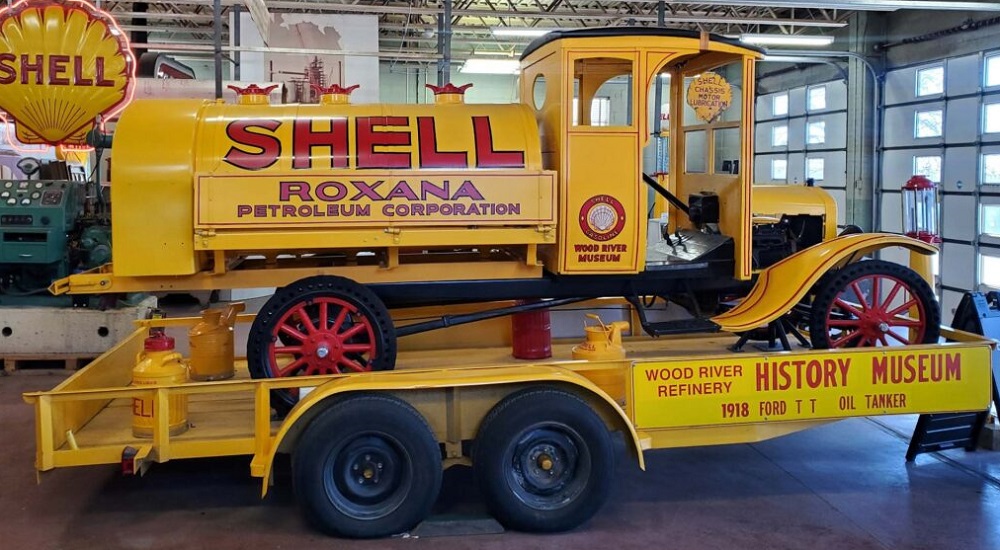
A small group of retirees in 1986 established the Wood River Refinery History Museum in three former Shell research laboratory buildings at Roxana, Illinois. Museum exhibits include a restored 1918 Shell tank truck and other large equipment in Building Two.
Roxana Petroleum produced high-quality oil from Oklahoma oilfields to be refined at the Wood River plant 15 miles northeast of St. Louis, today the largest refinery operated by Phillips 66. In 1928, Roxana Petroleum built an experimental oil storage reservoir in West Texas (see Million Barrel Museum).
September 23, 1933 – Standard Oil of California visits Saudi Arabia
Invited by Saudi Arabian King Abdel Aziz, geologists from Standard Oil Company of California arrived at the Port of Jubail in the Persian Gulf. Searching the desert for petroleum and “kindred bituminous matter,” they discovered a giant oilfield. The Saudi Arabia and Standard Oil partnership would become the Arabian American Oil Company (Aramco), later joined by other major U.S. companies.
September 23, 1947 – New Patent for “Hortonspheres”
Horace E. Horton’s Chicago Bridge & Iron Company (CB&I) received a patent for improvements to a spherical storage vessel he had invented in the 1920s. Designed to efficiently store natural gas, butane, propane and other volatile petroleum products, the large spheres were among the most important storage innovations to come to the U.S. oil and natural gas industry.
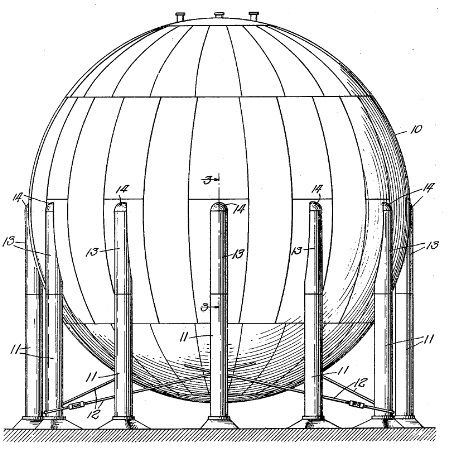
Horace Ebenezer Horton (1843-1912) founded the company that would build the world’s first “field-erected spherical pressure vessel.”
CB&I named its “Hortonspheres” after the engineer who had started the company in 1889 to build bridges across the Mississippi River. In 1892, CB&I erected its first elevated water tank in Fort Dodge, Iowa.
“The elevated steel plate tank was the first built with a full hemispherical bottom, one of the company’s first technical innovations,” CB&I noted, adding that the company built, “the world’s first field-erected spherical pressure vessel” in 1923 at Port Arthur, Texas.
Learn more in Horace Horton’s Spheres.
September 24, 1951 – Perforating Wells with Bazooka Technology
When World War II veteran Henry Mohaupt applied to patent his “Shaped Charge Assembly and Gun,” he brought anti-tank technology to the petroleum industry — a downhole bazooka.
Mohaupt, a Swiss-born chemical engineer, during the war had conducted a secret U.S. Army program to develop an anti-tank weapon. His idea of using a conically hollowed-out explosive charge to focus detonation energy led to the rocket grenade used in bazookas.

The patented “Shaped Charge Assembly and Gun” of Henry Mohaupt brought to the petroleum industry his World War II anti-tank “bazooka” technology.
After the war, the potential of these downhole rocket grenades to facilitate flow from oil-bearing strata was recognized by the Well Explosives Company of Fort Worth, Texas. The company employed Mohaupt to develop new technologies for safely perforating cement casing and pipe.
Learn more in Downhole Bazooka.
September 25, 1922 – First New Mexico Oil Well
Midwest Refining Company launched the New Mexico petroleum industry by completing the state’s first commercial oil well. Drilled near Shiprock on the Navajo Indian Reservation, the Hogback No. 1 well produced 375 barrels of oil per day.
Following the oilfield discovery, Midwest completed 11 more wells to establish the Hogback field as a major producer of the San Juan Basin. Two years later, a pipeline was built to Farmington, where oil was shipped by rail to refineries in Salt Lake City, Utah.
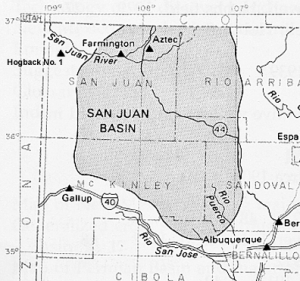
Midwest Refining Company discovered the Hogback oilfield in New Mexico’s San Juan Basin.
Production from the Hogback oilfield encouraged further exploration in New Mexico, leading to discoveries in 1928 at Hobbs in Lea County.
Learn more in First New Mexico Oil Wells.
September 26, 1876 – First Commercial California Oil Well
After three failed attempts, Charles Mentry’s California Star Oil Works Company discovered the Pico Canyon oilfield north of Los Angeles — California’s first commercial oil well. Drilled in a region known for natural oil seeps, the Pico No. 4 well produced 25 barrels of oil per day from a depth of 370 feet.
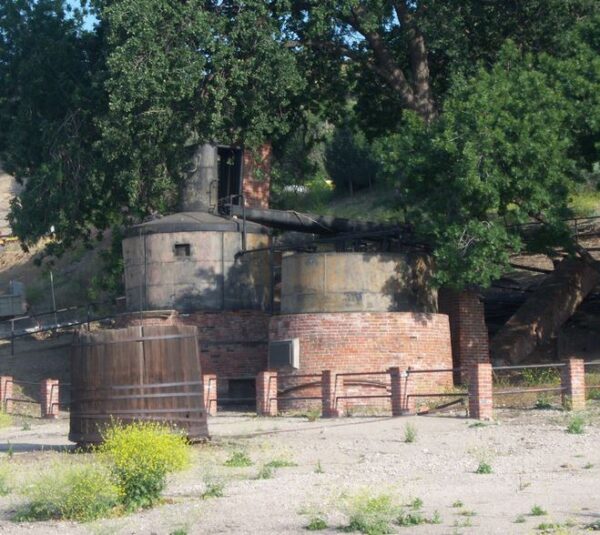
Preserved by the Santa Clarita Valley Historical Society, California’s first refinery is described as the oldest in the world. Photo courtesy Konrad Summers.
Pico Canyon oilfield production would lead to construction of California’s first oil pipeline and the state’s first commercially successful oil refinery for making kerosene lamp fuel and lubricants. Riveted stills set on brick foundations had a refining capacity of 150 barrels of oil a day.
California Star Oil Works was acquired by Pacific Coast Oil Company in 1879, and the Pico Canyon oilfield discoverer became part of the Standard Oil Company of California (Socal) in 1906. Socal acquired Gulf Oil, the nation’s fifth-largest petroleum company at the time, in 1984 and adopted the brand name Chevron.
Learn more in First California Oil Wells.
September 26, 1933 – King Ranch Lease sets Record
Despite the reservations of Humble Oil and Refining Company’s president, geologist Wallace Pratt convinced the company to lease the almost million-acre King Ranch in Texas for almost $128,000 per year with a one-eighth royalty on any discovered oil.
Although Humble Oil and Refining, a Houston company founded in 1917, had not found oil on the ranch, the lease deal was the largest oil lease contract ever negotiated in the United States.
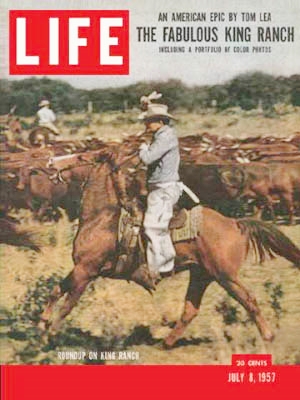
A 1933 King Ranch oil lease set a record.
Subsequent leases on nearby ranches gave Humble Oil & Refining nearly two million acres of mineral rights between Corpus Christi and the Rio Grande River.
By 1947, Humble operated 390 producing oil wells on the King Ranch lease alone. The company became ExxonMobil, which has regularly extended its 1933 King Ranch lease agreement.
Learn more in Oil Reigns at King Ranch.
September 26, 1943 – First Florida Oil Well
Near a watering stop on the Atlantic Coast Line Railroad in southwestern Florida, the Humble Oil and Refining Company completed the state’s first commercial oil well, the Sunniland No. 1. The company had spent $1 million drilling to a depth of about 11,600 feet to complete the discovery well, located 12 miles south of Immokalee, near Big Cypress Preserve and the resort city of Naples.

Humble Oil and Refining Company donated $60,000 to the University of Florida and the Florida State College for Women.
Florida’s petroleum had eluded discovery for decades. Almost 80 dry holes had been drilled by 1939. and Florida legislators, eager for their state to benefit from oil tax revenues, offered a $50,000 bounty for the first oil discovery. The Sunniland oilfield brought more drilling, and by 1954 the field was producing 500,000 barrels of oil per year from 11 wells.
Texas-based Humble Oil accepted the $50,000 prize offered by the state legislature, added $10,000 – and donated the $60,000 equally between the University of Florida and the Florida State College for Women. Humble later became ExxonMobil.
Learn more in First Florida Oil Well.
September 27, 1915 – Deadly Explosion in Ardmore, Oklahoma
A railroad car carrying casinghead gasoline exploded in Ardmore, Oklahoma, killing 43 people and injuring others. The car, which had arrived the day before, was waiting to be taken to a nearby refinery. Casinghead gasoline (also called natural gasoline) at the time was integral to the state’s petroleum development, with 40 processing plants in operation.
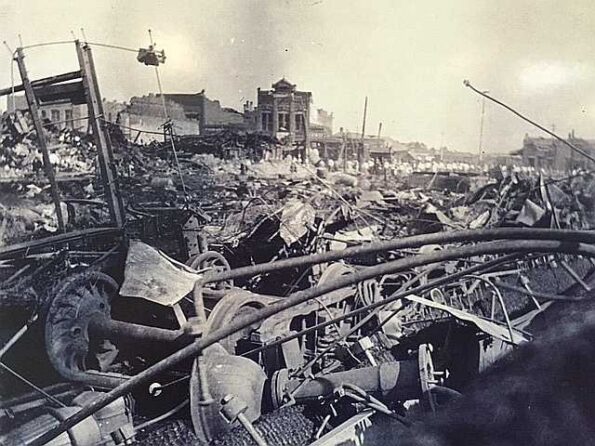
A casing gas explosion destroyed most of downtown Ardmore, Oklahoma, in 1915. Photo courtesy Oklahoma Historical Society.
According to the Oklahoma Historical Society (OHS), the disaster began when rising afternoon temperatures activated a valve to release the car’s gas pressure. “The Ardmore Refining Company then sent a representative, who removed the dome from the top of the car, filling the air with gas and vapors.”
Triggered by an unidentified source, the explosion destroyed much of downtown Ardmore. The Atchison, Topeka, & Santa Fe Railway was found responsible for the explosion and paid 1,700 claims totaling $1.25 million, OHS reported, adding, “Oil companies changed and improved the extraction and transportation methods for natural gasoline.”
September 28, 1945 – Truman claims America’s Outer Continental Shelf
President Harry Truman extended U.S. jurisdiction over the natural resources of the outer continental shelf, placing them under the control of the Secretary of the Interior. In August 1953, Truman’s edict would become the Outer Continental Shelf Lands Act, which affirmed exclusive jurisdiction over the U.S. continental shelf and a federal leasing program, “to encourage discovery and development of oil.”
The earliest U.S. offshore wells were drilled on lakes; learn more in Offshore Oil & Gas History articles.
______________________
Recommended Reading: Handbook of Petroleum Refining Processes (2016);The Bazooka
(2012); The Extraction State, A History of Natural Gas in America (2021); The Bazooka
(2012); Wireline: A History of the Well Logging and Perforating Business in the Oil Fields
(1990); The story of oil in New Mexico – Scenic trips to the geologic past (1989); Black Gold in California: The Story of California Petroleum Industry
(2016); Kings of Texas: The 150-Year Saga of an American Ranching Empire
(2003); Oil in the Deep South: A History of the Oil Business in Mississippi, Alabama, and Florida, 1859-1945
(1993). Your Amazon purchase benefits the American Oil & Gas Historical Society. As an Amazon Associate, AOGHS earns a commission from qualifying purchases.
_______________________
The American Oil & Gas Historical Society (AOGHS) preserves U.S. petroleum history. Please become an AOGHS annual supporter and help maintain this energy education website and expand historical research. For more information, contact bawells@aoghs.org. Copyright © 2024 Bruce A. Wells. All rights reserved.



